#@anomalous-antagonist
Explore tagged Tumblr posts
Text

it's done... for the uhhhm... third time????????
srsly guys dm me if you want me to hold onto any of ur sprites
credits in tags!!
#@racheldrawsthis#the winnie with the blue scarf belongs to ghosts-in-season for theirs and august-water 's au!!#@littlewormmuncher#@wordsofthespirits#@dissapearanceofsomeone#@polaroid-angel#@sketchy-reject#@phone-a-friend-eh#@dejected-doppelganger#@anomalous-antagonist#@classified-coworker#@your-new-replacement#im pretty sure thats them all#oh the like#lil red protag and that blue coworker#that's me if you can see the ones im talking about#studio investigrave#elevator hitch#sigverse#elevator hitch game#elevator hitch fanart#cold front#coworker elevator hitch
8 notes
·
View notes
Text




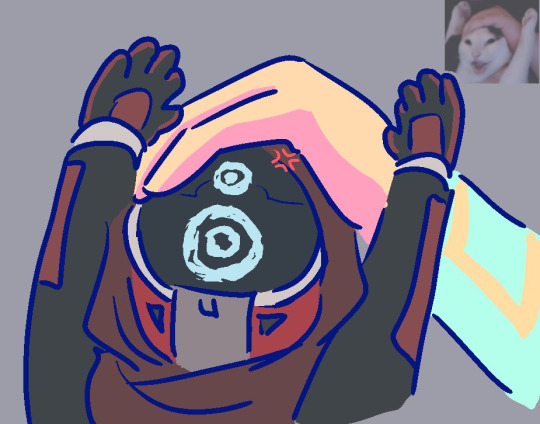










assorted NMS oc doodles backlog that i guess i forgot to post? i'm really bad at putting stuff in tags, like this comparatively more serious lore compilation post thing. haha. this trio is stupid.
slightly more serious teluya backstory WIP comic under the cut because it's less goofy


#nms#no man's sky#all of my NMS stuff is compiled in my own personal tag ig ->#no mimi's sky#i said dvoran-e is only canon when it's funny but unfortunately i think it's constantly funny which means it's constantly canon so uhh#i dont post enough about them here on tumblr. i post about them a lot elsewhere but i keep forgetting to post about them here.#all you need to know are these three goobers:#1) teluya. the blue one. has the anxious tendencies of a small prey animal. almost too kind and gentle to exist. naive.#2) dvorak. the red one. trying really hard to not be a bastard after [unfathomably long amount of time] of being a bastard ad infinitum.#massive nerd. very little social grace. easily flattered/sheepish. regrets being a bastard very much. atoning soul. permadeath OC.#3) anomalous-entity. the yellow one. called an-e for short. is a bastard (funny). creative mode chara.#extremely overprotective of teluya for obvious reasons. them and dvorak are formerly antagonistic and now are...#well. i dont know. they're something.
21 notes
·
View notes
Text
Been playing Control for the past few hours and now I have an idea for a MNADL side-story...
#bionicle#metru nui archives data logs#i only have the vague outline so far#(basically it takes place im the briefly hinted-at mirror timeline that is apparently mentioned in a bionicle story)#and in it the archives are less focused on preserving and researching creatures and artifacts#and more like a mix of the scp the fbc and whatever the antagonists of trepang2 are called#(i cant remember)#so like. they only go after anomalous or dangerous things#the ratio of guards to archvists is completely different#and they also capture and research anomalous sapient beings
5 notes
·
View notes
Text
((Ooc: @anomalous-antagonist , @c0worker-bryce , @greatestcoworker , and Jasper all walk in a bar ))
((Audio from Until Dawn Snapcube fandub))
#💼mod shitpost#💼mod art#💼scissors.#💼blondie#💼twin 1#💼twin 2#💼coworker triplets au#💼au#💼chatting...#fake coworker#elevator hitch coworker#elevator hitch#elevator hitch rp#coworker elevator hitch#fake coworker elevator hitch#studio investigrave#sigverse#elevator hitch antag#elevator hitch doppelganger#elevator hitch ask lore
119 notes
·
View notes
Note
>[Something stares at Protag. It resembles him, or his doppelganger, but has grey skin, and vibrant red eyes]
"...you..."
>[It seems to recognize him, but Protag has never seen it before. It's smiling, though it's hard to tell if it's friendly or hostile]
>[ @anomalous-antagonist]


🎵: "Interesting... I've never seen this thing before."
[He stays a good distance away from the creature, it may look human, but he knows it might not be.]

🎵: "Tch... What a pain in the ass. Guess I gotta see what this thing does."
[He throws a cassette at it, unfortunately missing where he aimed. It hit the floor.]

#❌️ hello#❌️ tapes#🎵 protag#rp#studio investigrave#studio investigrave au#elevator hitch#elevator hitch rp#elevator hitch protag#[[ooc: SPRITE EDITS EVERYONE!!!!]]
66 notes
·
View notes
Text
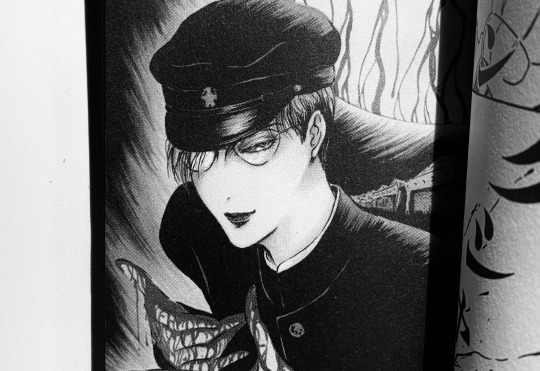
MOON AGE 15 : DAMNATION (English Translation) Moon Age 15: Damnation is a 1988 short comic by pseudonymous author Not Osada, who openly drew influence from the Tokyo Grand Guignol's work in such a way that can arguably give a loose insight to the TGG's mysteriously anomalous works. While only a slight window into what could've existed in Ameya's vision, each contemporary rendering of his world of gore-soaked medical equipment and rusted metal is valuable in what it represents. As mentioned in my prior Litchi essay, the fragments of the Tokyo Grand Guignol we have now are descendants of a cultural phantom, standing as shrouded windows to a strange intangible stage that's positioned somewhere between post-Maruo inferno, industrial subculture and decadent poetry. While Osada’s manga featured notably grizzly and cruelly morbid scenarios, his stories were made explicitly for the shoujo market with a distinctly shoujo-influenced art style. Characters appear almost doll-like with their visual perfections, all while they’re often dismantled and reassembled in bizarre surgical practices by sadistic doctors. Much like how Zera expresses horror to seeing his own imperfect organs in contrast with his youthful appearance, our pristine victims share the same internals as any other slaughtered cadaver, all in a maddening spiral of narratives that contemporary readers often described as resembling descents to insanity. This fixation of the contrast between perceived beauty and grotesqueness is arguably traced back to the Tokyo Grand Guignol’s own works, with lines accentuating the youthful features of certain characters while audience members were known to fondly look back on the actors’ appearances. Litchi himself was described as being a “cute” robot despite the violence it was programed to carry out. It’s possible that this collision is inherent to Ameya’s conceptual destruction of the TGG. A known detractor to poetic writing, he called on a romantic author to pen the screenplays to the TGG’s first three plays so he could “destroy” them in his direction. The use of beauty could arguably be a mockery of it, taking these idealized dolls and leaving them trapped in worlds of fascism and hospital rooms that are haunted by the stinging stench of antiseptics and blood. Plastic hospital drapes were used in place of stage curtains and autopsy films were shown to the wide-eyed characters, who spoke of pure blood and dirty blood, the antithesis of blood, mercuro. What is beauty a representation of in the Grand Guignol’s works with the prominent fascist leanings of the protagonists? Considering the perspectives of our characters where the Hikari Club and the deranged teachers and Nazi doctors are treated as protagonists rather than explicit antagonists, the plays could arguably be read as the decay of a self-convinced beauty under fascist rule. Songs of the pure-blooded ubermensch fading into silence as the singers all collapse, lost in their own delirium as they pump mercurochrome into their hearts and try to rationalize their own organs that resemble the internals of the so-called ‘landraces’ they rendered into lifeless meat. It’s the natural conclusion of fascism, a collapse that occurs in demented violence to the face of a denial of death. I was originally split on publicizing my translation due to copyright-related complications, but after seeing the increasing gatekeeping of TGG materials at the hands of a rapidly growing market riddled with competitive spending and scalping, I feel obliged to share it to the public who (like myself) can’t afford to spend the now literal hundreds that are required to access angura ephemera that was meant to be openly available to the public to begin with. When originally finding this story, the book it was featured in was only 5 dollars. Now it goes for 60 to 200. That's ridiculous. With all the preamble out of the way, the story is under the cut...
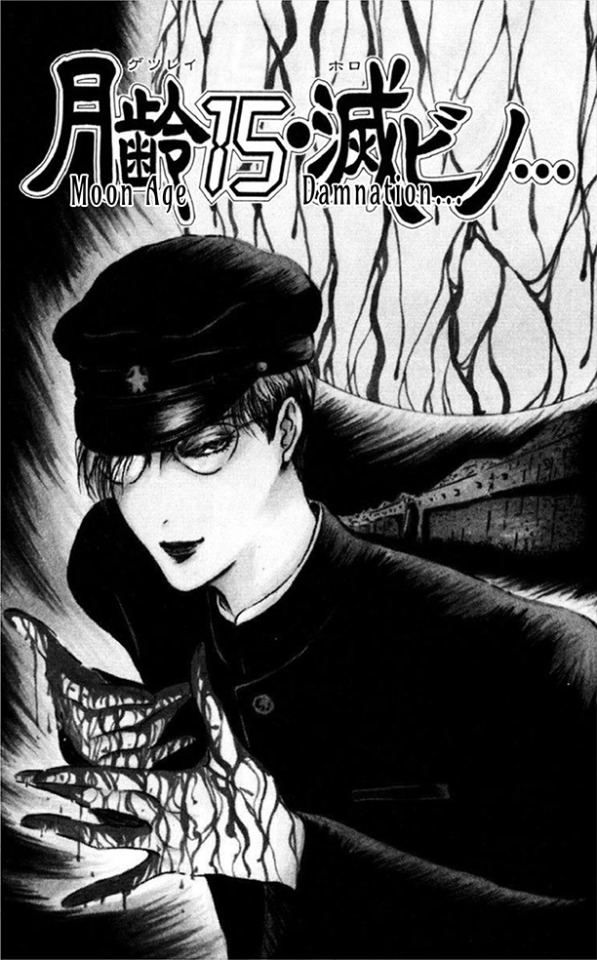
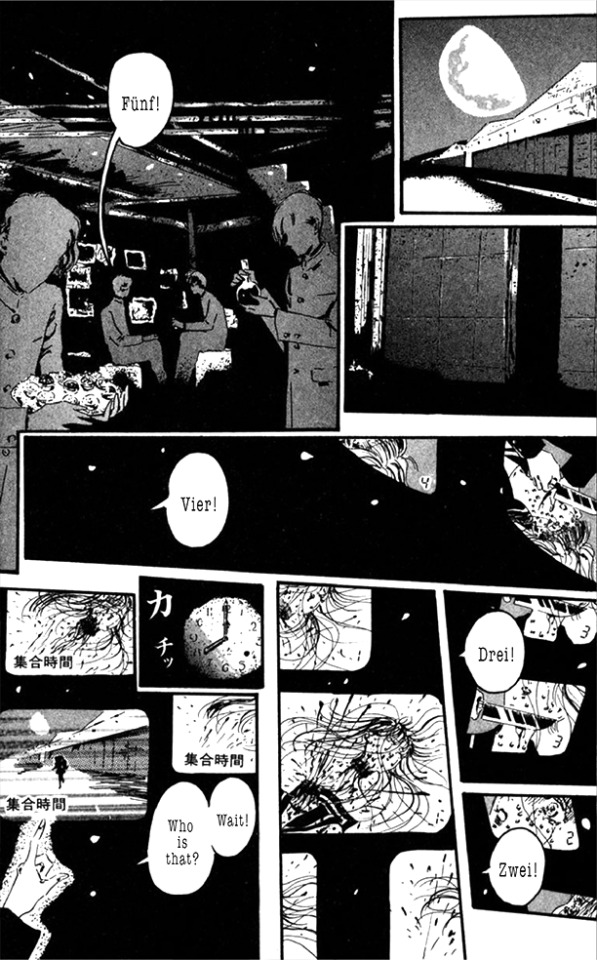
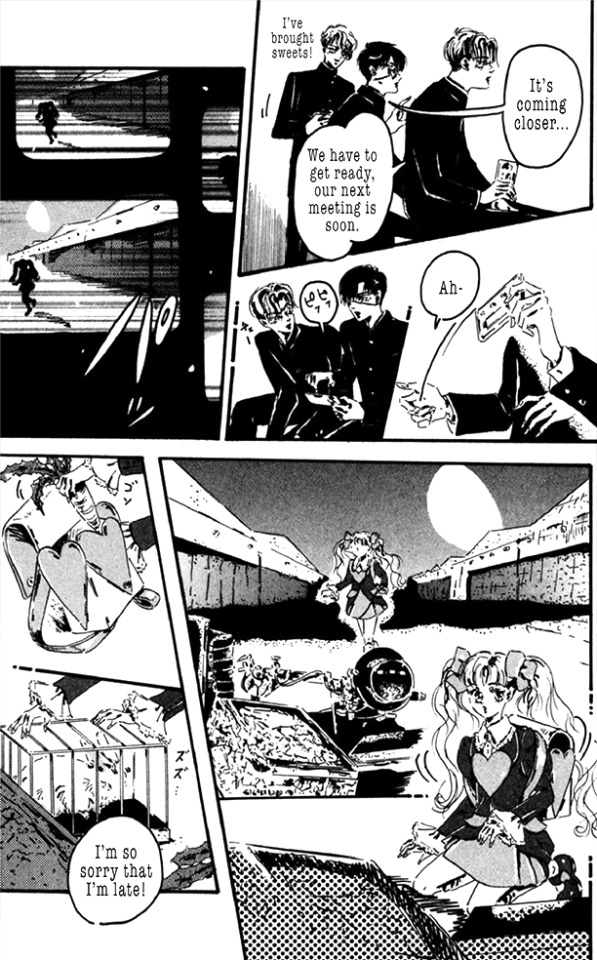
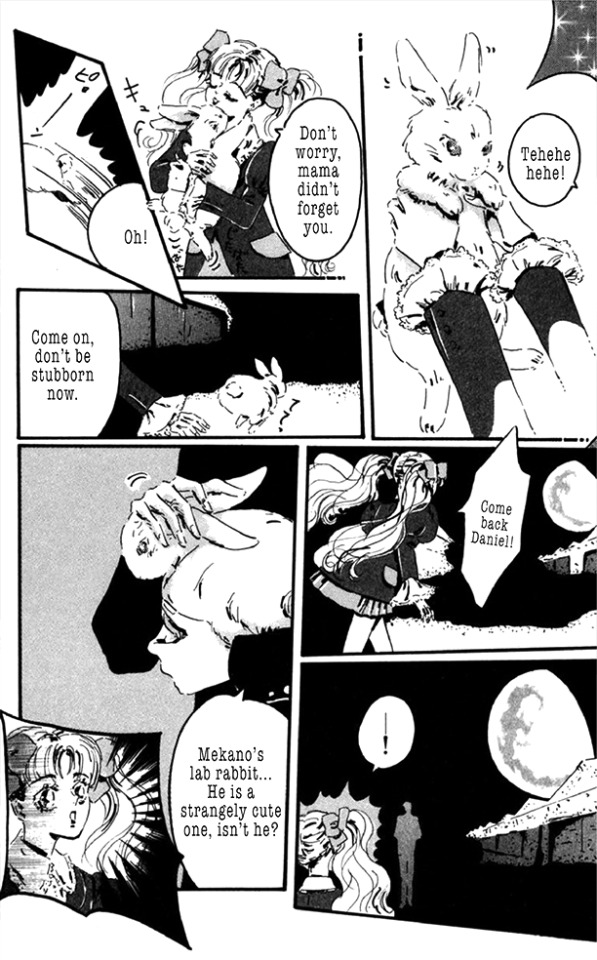


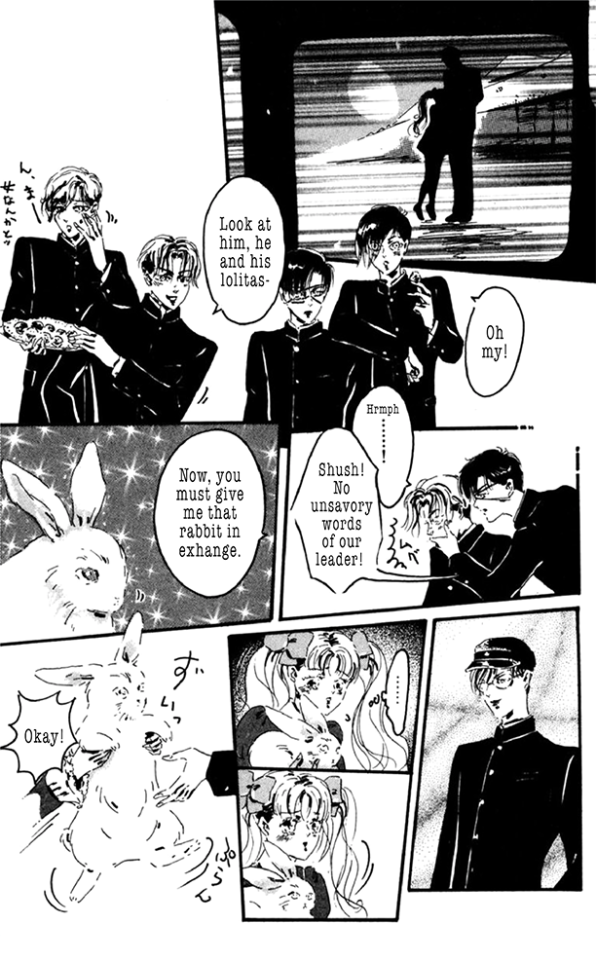
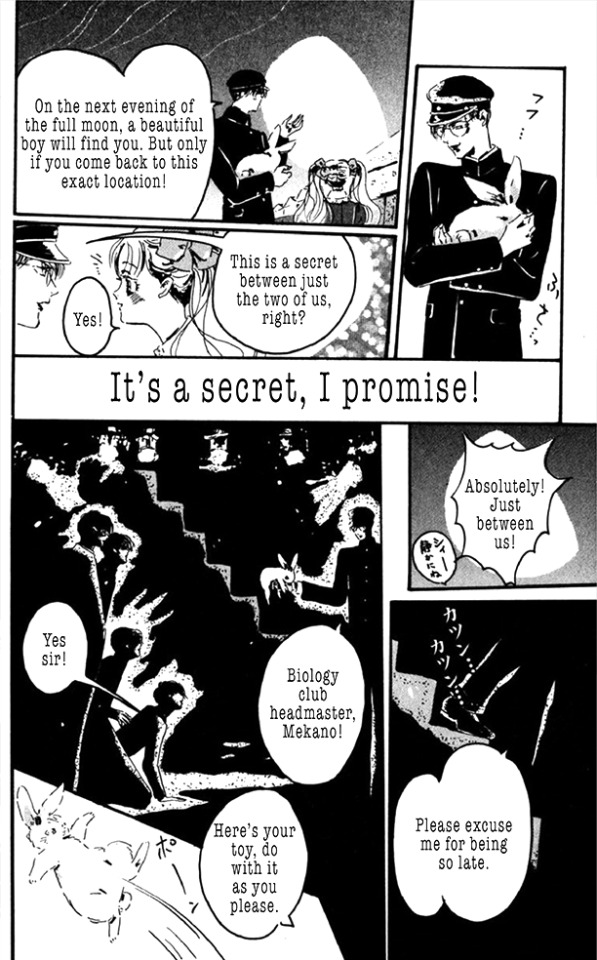
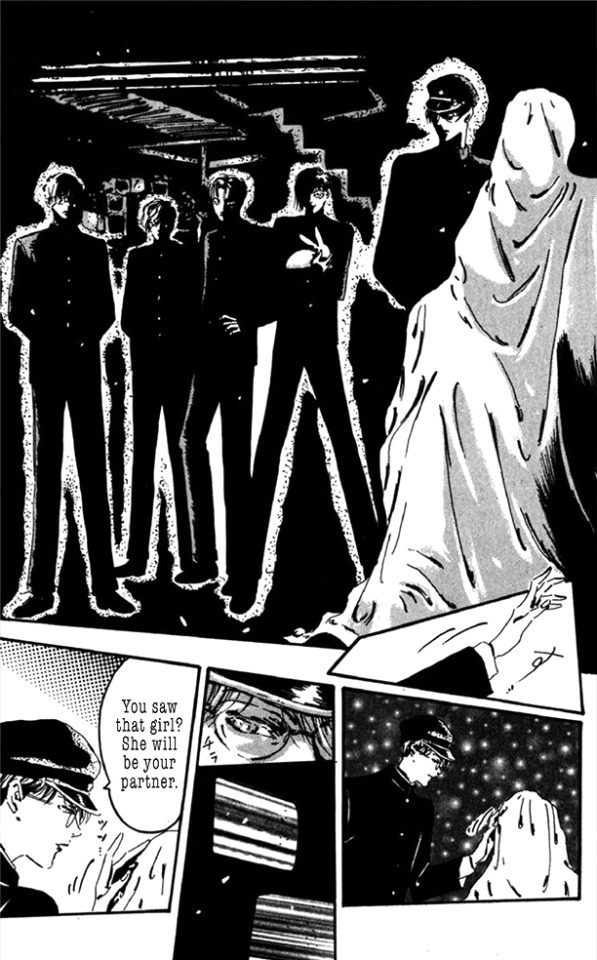


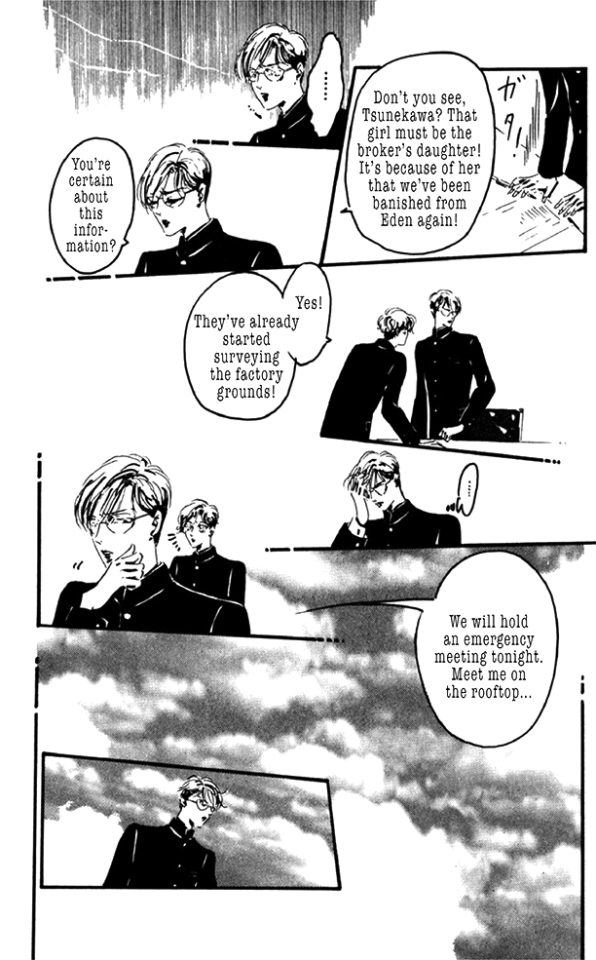


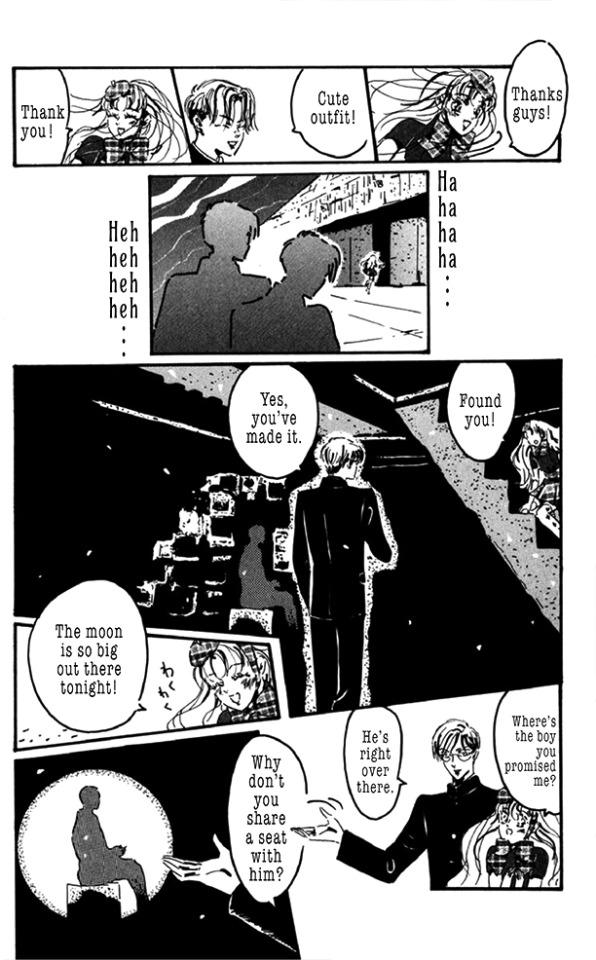
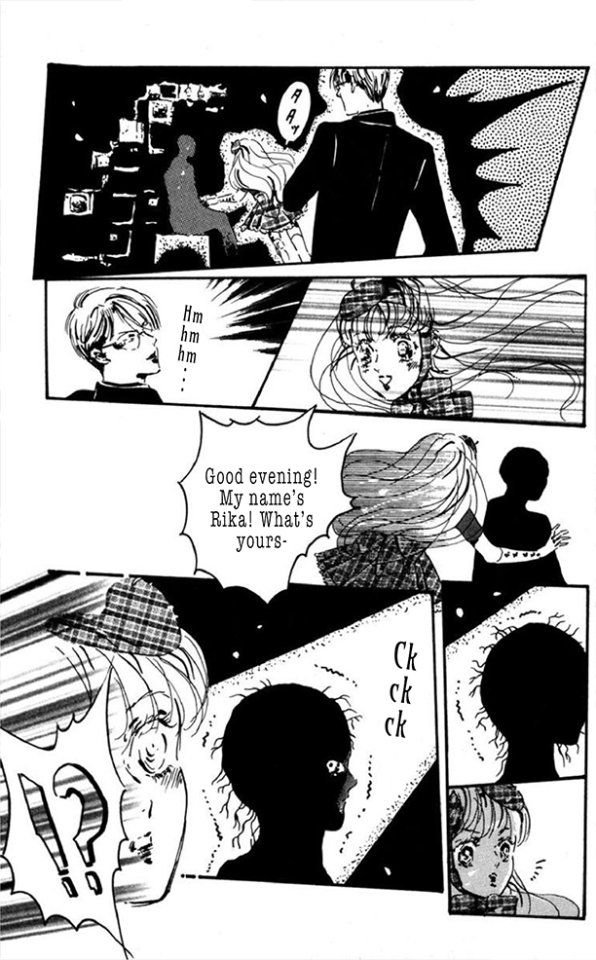
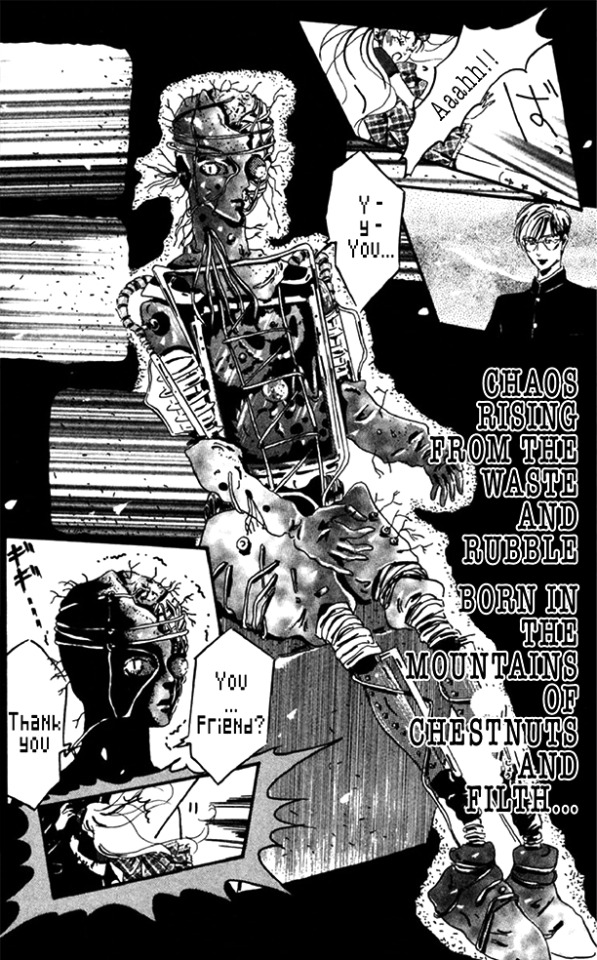
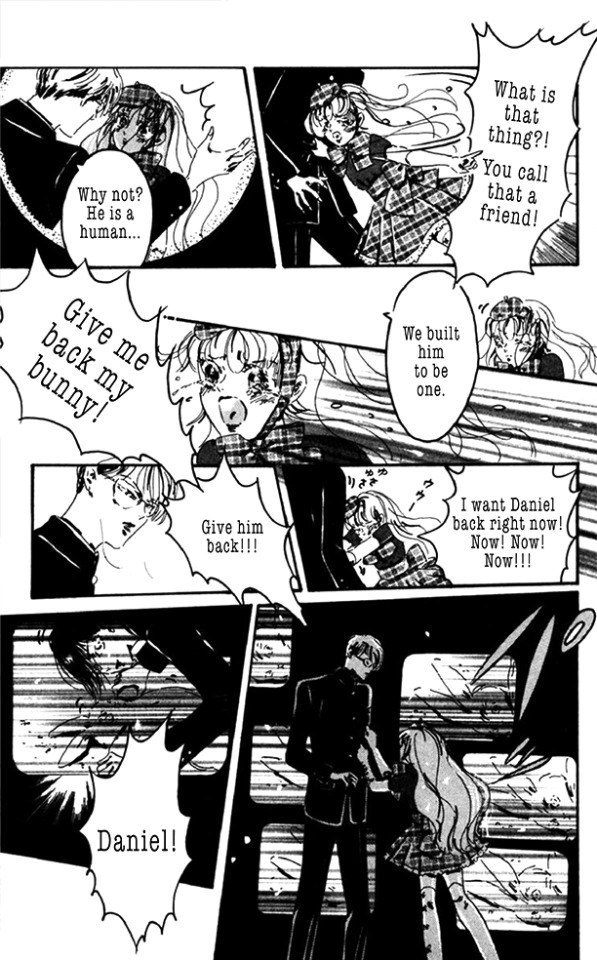

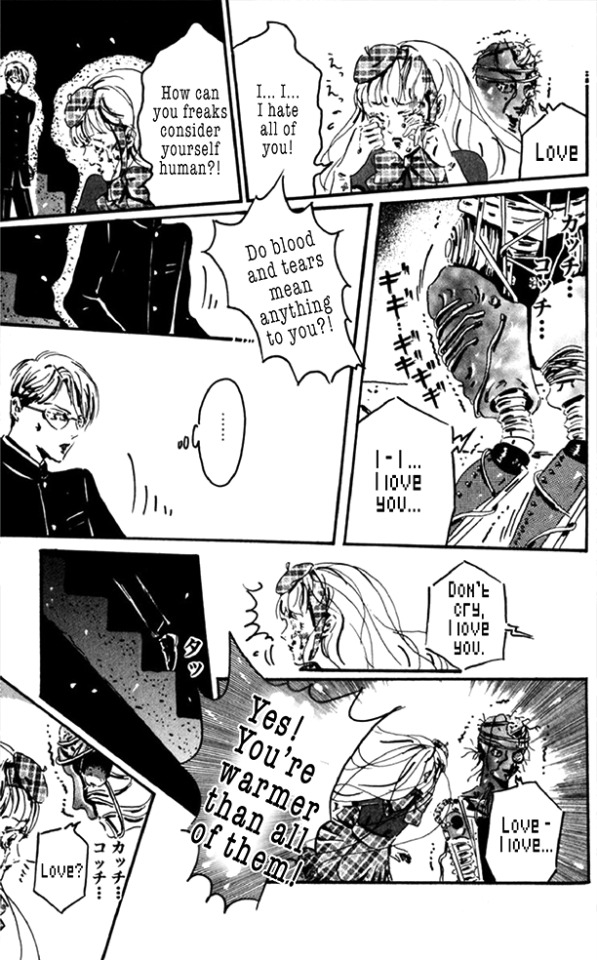

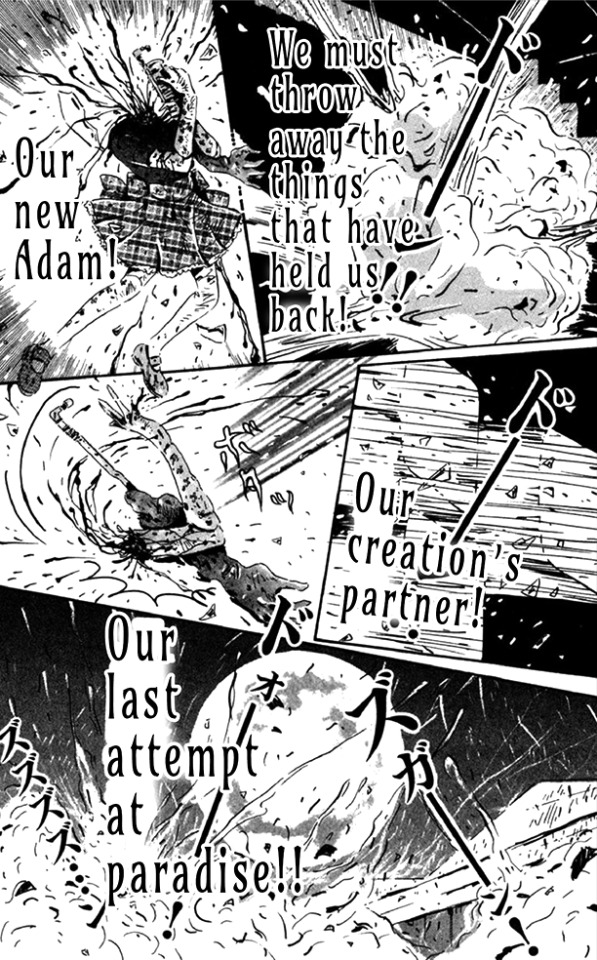

While I made my best effort to maintain accuracy to the source material in translation despite my practically nonexistent understanding of Japanese (my translation method is a Frankensteining of language learning videos, a Japanese to English dictionary from the Internet Archive and Google Translate with a lot of localizing and dissection in between), there are several details I feel I should note for the sake of transparency. One smaller one was the inclusion of the term l * lita. It was in the original text, and I was honestly very unsure of including it in my translation as it’s a term I’m personally icked out by. While I was ultimately recommended to keep the line as is for accuracy, I wish to state that it's a term I'm personally very uncomfortable with in what it represents. The other note, which is the more prominent one in the final product, are the references to The Last Attempt at Paradise. In the original text the club members solely refer to their hideout as paradise and Eden, leaving a lot of excess space in the speech bubbles after translation when making the shift from Japanese text to English. The Last Attempt at Paradise was the name of S.P.K.’s 1982 live album that documents their set at the Off the Wall Hall venue in Lawrence, Kansas. Often considered one of their best concerts and a highlight of the industrial genre, the S.P.K. Appreciation Society of Sydney in their All The Way With S.P.K. / American Tour article describes the concert as being the group's “best performance to date”, further adding that they “Flattened (an) enthusiastic audience with massive P.A. amplification of FX bass regeneration”. This insertion wasn’t done at random, as the Tokyo Grand Guignol’s works were heavily engrained in the original industrial scene of the 80s. Both the 1985 and 1986 performances of Litchi began on a playback of the S.P.K. song Culturcide (from their 1983 Dekompositiones EP), and it was likely that use of the track that led to Not Osada’s early fixation on S.P.K.’s music. At the end of Blind Beast, in a sort of reader Q&A Osada is questioned about some of his favorite music. At the top of the list he features the tracklist of the Dekompositiones EP and the track Mekano from their 1979 Mekano / Contact / Slogun single. Interestingly enough he states that he only likes those four songs from the band, following the text with laughter in regards to their remaining discography. I’m unsure if this means he was unimpressed with their noisier work (which would be curious knowing his liking of Mekano with how it originated from their earliest noise-adjacent album) or if he was directed to their later Machine Age Voodoo material and was alienated by it. In the same Q&A he also mentions the band Funeral Party, who featured specially commissioned art by Suehiro Maruo on their Dream of Embryo single. It's apparent that he also had a copy of the compilation album Vision Of The Emortion, as the list also includes C·C·Mekka and Ego'n Mole, who were both featured in the album alongside Funeral Party's only two other documented tracks, Das Sunde and Gears - Night. S.P.K. references are sprinkled throughout this story along with Osada's other Litchi-adjacent entries. Aside from one of Zera's henchmen being named after the Mekano track, it's very likely that the frequent references to Eden are in homage to the lyrics of Mekano. The first lines of the track include the verses "One by one, odd to even. Break the scenes, rudely eden...".
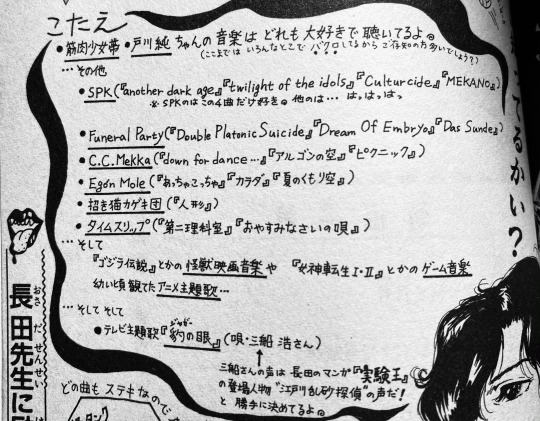
Moon Age 15 was originally printed in 1988 as a two-part miniseries in the horror magazine Complete Collection of Horror and Occult Works - HELP, namely in volumes 5 and 6. While being an early work that derived from the TGG, it still wasn’t the first comic to adapt the Litchi stage play, with Das Blut : Blood and Eternal Girl preceding it with their 1986 publication in Osada’s debut anthology Night Reading Room, sharing the same year as the TGG’s early closure following creative conflicts between Norimizu Ameya and K Tagane (the group's author, who remains anonymous to this day). It’s to be noted however that while Das Blut and Eternal Girl were the first stories to feature the Hikari Club as antagonists, they are only tangentially related with Moon Age showing more distinct Grand Guignol archetypes (musings of the full moon, examinations of the Hikari club’s misogyny, idealization of technology, and even an early rendition of the Litchi robot itself). First kept solely as a brief serial, Moon Age was later reprinted in abridged form as a short story in the 1996 Blind Beast anthology. While copies of HELP are notably hard to find and demand high prices, I was given an in depth view of both volumes that featured Moon Age’s serialization by a collector earlier last year. While the drawings are still the same on a rudimentary level, the length of the serialized version is notably longer than the later Blind Beast variant, with the HELP serialization being over 40 pages while Blind Beast’s is only 24. This was the product of the manga being entirely revised for Blind Beast’s print, with the layouts being drastically altered along with basic revisions of the line art. Certain scenes that would usually take 2 to 3 pages in the HELP version were condensed to 1, resulting in a unique tradeoff where one version feels unusually spacious in its framing while the other is heavily condensed and almost chaotic by comparison. It’s only a thing that springs on you once you compare the two variants, I saw the revised version first and originally didn’t pay any mind to it. One thing that is certain is the polishing of the art. The brush work in the Blind Beast version is refined with a more elaborate sense of weight and flow while the HELP version is notably rough with the prominent use of rudimentary screentones. It reflects as a somewhat rougher variant of the art shown in Night Reading Room. It feels strangely digital, like it’s the product of early computer art. The line-by-line reuse of the decapitation scene from Eternal Girl being shown on the TVs further adds to the strange digital feel of the art style.

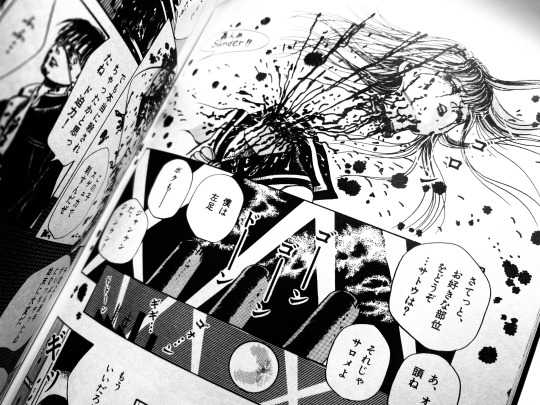
Similar to Moon Age, Osada's other stories of the Hikari Club featured the members luring girls to their brutal deaths. In Eternal Girl the members bring in a student and film her mutilation for a snuff film that acts as the story's namesake, in Das Blut they corner another student to the woods where they hang her, and in Jinta Jinta they kidnap a student who bullied one of her classmates to suicide before trepanning her with a strange device that's somewhere between an electric chair and a drill. Not Osada was very recently namedropped in the concluding essay of an English print of Kawashima Norikazu’s Her Frankenstein under the alternate Nagata Nooto anglicization of Osada’s pseudonym. Their name is a curious case as while there is a prominent written variant (長田ノオト), it’s seen numerous English iterations. In Osada’s own English signatures it is written as Not Osada (with the name apparently being derived from a German phrase), but other variants include Osada Nohto, Osada Nooto and Not Nagata. If I'm not mistaken, it could count as one of the first English acknowledgements of Osada's works in print.
68 notes
·
View notes
Note
"...help..." "...I want freedom.... please..." >[Protagonist can hear a broken voice coming from behind the boarded door of floor eight. There's a soft humming tone as well, it makes his head feel fuzzy] >[⚠💀⚠] @anomalous-antagonist
>[Protag pauses just as he was about to take another step downstairs, a pulse of fear strikes his heart as he heard the unknown voice.]
>[He stays quiet for a few moments to try and assess the situation as he glances at the door with wide eyes. He remembers Coworker had rushed him past this level before, so he was reasonably a bit fearful.]
104 notes
·
View notes
Note
He makes our "charachters" look normal and well thought out (at least compared to that fucking gnome) but the short of it is
Extremely adaptable lizard thats also extremely cringe cause he an edgelord. Which is why in my SCP canon i had Big Red pull up Da Belt
I'm bored and my brain has decided that I want to converse with you specifically, so uh. Hi.
very epic
i just read some of the entries in the 682 termination log and uh
do you remember the gnomish bastard? the dude that i blocked because he was another scale of cringe?
yeah that damn gnome kins 682
#682 is rather cringe#edgelord ass lizard boi#“memetic effect where everyone hates him” no hes just annoying and thats it he gets on everyones nerves#ofc i used my OPPLZNERF author powers to grab the scarlet king and go “buddy your son is being annoying” and well#ho#ly#shit#(big red after that was like “you gotta excuse him hes very young and has no idea how to be a monster im bery sorry for his behavior” and li#ke. thats the ultimate antagonist of the SCP canon and he was APOLOGIZING to THE FOUNDATION cause his son was being a hot topic godzilla. ap#ollyon class? more like autism) (just like all the anomalous gods but THATS ANOTHER THING)
12 notes
·
View notes
Text

Salutations! This fellow is my oc, Keith. He’s a wildly dramatic vampiric acrobat from my work-in-progress series, The Anomalous. I’m not sure whether to describe him as an antagonist or an anti-hero, as he’s certainly on the protagonist’s side, but spends a whole story arc being directly in the way lmao. Don’t mind how messy this is, it was originally meant to be a warm up sketch
11 notes
·
View notes
Note
For Blodwyn: Hi, I've been getting the same Deja Vu for the last twoelve years, is this normal? it happens no matter what im doing, similar to any normal Deja Vu but at the end of the vision I always seem to cry blood, not in real life though...
yet
Oh my god I was trying to be antagonistic, please stop calling me Blodwyn, it was a dumb name I picked out from a book when I was in my Mall Goth phase. "phase?" but aren't you still-
No, it's a whole thing, Mall Goth and Industrial Goth are apparently...it's different, is the point.
Deja Vu is like, a basic human condition that comes from, like, the biological imperative we had as monkeys to be able to see patterns and recognize predators, or whatever. There's some anomalous stuff that can cause deja-vu-like sensations; but if you're having like, actual visions, that's not deja vu, that's something else entirely. Could be precognition, could be hallucinations, it's hard to tell. Call our appointment number and ask for extension 7. You should probably come in and let OFSO- Such a stupid name.
It really is. You should let OFSO take a look at you. The crying blood part is really worrying.
Also, two or twelve? If you can't nail it down, that's a problem.
24 notes
·
View notes
Text
Introductions are in order!

Hey, hello! The name's Bryce Stryker. I work at [RECACTED], in... ffiiinance. Finances. I'm sort of a big deal here. And hey, maybe through the power of the American dream, some common sense and survival skills, and a little help, you might make it too! Just don't let it get to your head. Alright? >[⚠🚬⚠]
OOC NOTES UNDER THE CUT
This is an elevator hitch AU blog. Characters and (most) art belong to racheldrawsthis and Studio Investigrave. Concept for AU belongs to me TAGS: Posts: anomaly.post Asks: anomaly.answer Reblogs: anomaly.reblog Roleplay: anomaly.reply Out of character posts: ooc.post, ooc.reblog, ooc.ask.
Current blogs in the AU: @classified-coworker (me) @anomalous-antagonist (me) @workingprotagonist
#elevator hitch#elehitch#elevator hitch au#roleplay blog#rp blog#studio investigrave#intro post#anomaly.ooc#elevator hitch coworker#his name is not really bryce#but you already know that
32 notes
·
View notes
Text

hes done for now mehehehhehe
#*cracks knuckles*#credits.#i can do this.#@littlewormmuncher#@wordsofthespirits#@polaroid-angel#@doppelcoworker#@anomalous-antagonist#@classified-coworker#@dejected-doppelganger#@dissapearanceofsomeone#i have some of mine in there#and lastly#the canon sprites#are @racheldrawsthis#thank you for listening
2 notes
·
View notes
Text
Half-Life story structure headcanon
I feel like Half-Life can be split up into three distinct acts with an epilogue and a prologue.
The prologue is "Black Mesa Inbound", and "Anomalous Materials"
Act 1 is from "Unforeseen Consequences" to the end of "Apprehension"
Act 2 is from "Residue Processing" to the end of "Forget About Freeman!"
Act 3 is from "Lambda Core" to "Nihilanth"
The epilogue is "Endgame" or the G-Man speech
I feel like this because each of the sections feels pretty distinct from the other
The prologue is like the calm before the storm before the resonance cascade occurs and the campaign "really" begins
Act 1 is the initial Xen invasion with vortigaunts and headcrabs, and also the initial HECU takeover of Black Mesa, it ends when Gordon is ambushed by the Marines and knocked out
Act 2 is distinct because it's when the Black Mesa Incident really goes to hell, with gargantuas and alien grunts running around the surface, the HECU begins to lose control of Black Mesa and eventually ends with them abandoning the whole facility. Act 2 ends for Gordon when he goes underground for the final time after escaping the gargantua from the car park
Act 3 is separate from the HECU-heavy act 2 as it recenters the antagonistic role from the military back to the aliens, It also brings the science team back into a central role in the story and builds up Xen as the Gordon's final destination
The epilogue is self-explanatory as it's completely separate from the rest of the story with the surreal G-Man speech
This post feels really long so im going to end it here, byyyeeeee
#Half-Life#half life 2#gordon freeman#barney calhoun#alyx vance#half life#adrian shephard#hl2#half life alyx
33 notes
·
View notes
Text

"You are welcome in hell, there are only parties, no one rents you. Heaven is full of believers annoying you and offering help."
ANM #: 135-XK - "Hillbilly Jack"
Danger Level: Infernus ⚜️ | Partially Contained ⭕️
Responsible Researcher: Dr. Öctavio Kalev
Anomaly Type: Rural, Demonic, Entity, Reality-Bending
Confinement: ANM-135-XK, hereafter referred to as "Hillbilly Jack," is to be contained within a 10m x 10m heat-resistant chamber located in the Rural Anomalies Department (D-11). The walls, floor, and ceiling of this chamber must be constructed with at least 30 cm of reinforced titanium and layered with flame-retardant materials. The chamber is to be monitored at all times by thermal sensors and motion detectors. Any deviations from standard temperatures within the chamber must be reported immediately.
Personnel interacting with ANM-135-XK must not stay within proximity for longer than 30 minutes to avoid exposure to dangerous heat levels. Under no circumstances should any religious materials, symbols, or references be brought into ANM-135-XK containment chamber without prior approval from Level 4 personnel. All religious discussions are strictly prohibited, as ANM-135-XK has shown to become highly antagonistic when provoked by such topics.
In the event of a containment breach, Department-11 is to initiate Protocol Hellfire, which consists of flooding the containment area with a specialized fire-extinguishing foam and deploying heat-resistant drones to re-establish containment. All nearby personnel are to evacuate immediately to prevent exposure to high temperatures or potential attacks.
Description: ANM-135-XK is a humanoid entity standing approximately 1,96m tall, resembling a stereotypical South American hillbilly, with several exaggerated physical features. ANM-135-XK possesses large, shaggy black hair, missing teeth, and weathered, leathery skin indicative of advanced age or prolonged sun exposure. Despite its appearance, the entity does not exhibit signs of aging or decay beyond its cosmetic features.
ANM-135-XK most notable features include pointed ears, resembling folklore depictions of supernatural entities, and despite possessing human feet, the footprints left by ANM-135-XK are cloven-hoofed and burn the ground where it steps. A pentagram is carved into the back of ANM-135-XK right hand, the pentagram is said to have been self-inflicted using a knife. It is unclear what the purpose of this symbol is, but it appears to enhance the entity anomalous abilities.
ANM-135-XK also wears a necklace composed of human teeth, though analysis of these teeth has shown no direct connection to any known individuals. It is unclear where or how ANM-135-XK acquired these. The entity also wears a plain white coat over a black shirt. Additionally, ANM-135-XK wears a black ring on its middle finger. Examination of the ring has yielded no anomalous properties, though it is theorized that it may be connected to the entity’s abilities. The subject also always carries a Bible with him, keeping it at his side or under his arm, he seems to work as a type of "false apostle".
ANM-135-XK communicates through a thick northeastern Brazilian accent, often utilizing rural colloquialisms and slang common in that region. Its voice is deep and raspy, further reinforcing its unsettling presence. Despite its often jovial and playful demeanor, ANM-135-XK displays highly erratic behavior, with a tendency toward sadistic humor and irreverence toward religious figures, symbols, and beliefs.
The entity was first discovered in Recife, Pernambuco, where it had been apprehended by a group of locals who attempted to hang it for heresy. ANM-135-XK responded by turning the rope into a sentient fire snake, which attacked the mob, allowing the entity to escape. The MOTHRA Institute tracked ANM-135-XK and successfully contained it after deploying specialized heat-resistant task forces.
Jack possesses the ability to conjure and manipulate fire at will. Its most frequent display of this ability is the "burning" of the path it walks on, which causes the ground beneath its feet to scorch and leave behind cloven-hoof-shaped imprints resembling those of a large goat. These imprints are highly dangerous, as they retain extreme heat for extended periods after ANM-135-XK has left the area. ANM-135-XK appears to be entirely immune to the effects of fire and extreme temperatures. Infrared scans show that Jack's body can reach temperatures in excess of 1700°C without displaying any visible harm or discomfort.
ANM-135-XK is constantly surrounded by a pungent smell of sulfur, which becomes more pronounced when it engages in its anomalous abilities. This emission has been linked to its fire manipulation and the sulfur’s presence in the surrounding air increases exponentially when ANM-135-XK becomes agitated or excited.
ANM-135-XK is capable of exhaling jets of fire from its mouth. These flames have been recorded at temperatures upwards of 1100°C, making them capable of melting most conventional materials. This ability is rarely used but is typically a response to perceived threats or provocations. While Jack's primary means of interacting with others involves humor and taunting, prolonged exposure to the entity has shown that it can influence the mental state of nearby individuals. This includes causing feelings of hopelessness, fear, and suicidal ideation. These effects are more pronounced when ANM-135-XK engages in religious mockery.
In interviews, ANM-135-XK refers to itself as "Satan," though it is unclear whether this is a literal self-identification or a delusion. The entity has repeatedly demonstrated a masochistic streak, encouraging physical harm to itself and showing enjoyment when such harm is inflicted, though it displays no signs of damage due to its high immunity.
Despite its chaotic nature, ANM-135-XK is highly persuasive and charismatic. It has convinced several lower-level staff to engage in activities that breach protocol, often leading to disciplinary action or worse. Researchers note that ANM-135-XK has a tendency to fixate on individuals with strong religious convictions, taunting and manipulating them into questioning their faith.
Addendum 135-XK-A: Incident Log 135-XK-???
On 27/09/2024, ANM-135-XK breached containment during a routine check, causing widespread damage to D-11. The entity escaped its chamber by generating intense heat, which weakened the surrounding metal and allowed it to melt through its cell door. ANM-135-XK roamed the facility, leaving a path of destruction and burning several personnel who attempted to contain it. After █ hours, Protocol Hellfire was initiated, successfully recapturing ANM-135-XK using heat-resistant drones. Casualties numbered at ██, with 15 suffering third-degree burns.
Following this incident, ANM-135-XK containment procedures were upgraded to include reinforced titanium walls and additional flame-retardant measures.
Interview between Dr. Strike and Jack Caipira (ANM-135-XK)
Date: 09/28/2024
Location: Containment Chamber D-11, MOTHRA Institute
Interviewer: Dr. Strike (specialist in anomalous objects)
Interviewee: Jack Caipira
Dr. Strike enters the containment chamber. The intense heat is immediately noticeable, and he adjusts his steps while observing Jack, who is seated in a relaxed, almost seductive manner in a corner, surrounded by a faint smell of sulfur.
Dr. Strike: Hello, Jack, my name is Arthur ██████. How are you feeling today?
Jack Caipira: Go screw yourself, Arthur. Now that the introductions are over, I feel almost at home, just in the heat of the fire. I’d rather be in hell, drunk on whiskey. And you, skinny guy?
Dr. Strike: Uh… that’s an interesting perspective. It seems like you’ve been to hell before. What do you think of heaven, then?
Jack Caipira: Heaven? I’ve been invited a few times before. It’s just full of boring people! Packed with believers who never stop singing. There’s always some fat old lady banging a tambourine next to you. It’s a complete joke! And those little angels in skirts looking like a bunch of... (pauses) well, you know.
Dr. Strike: (taking notes) So, you prefer the company of other beings from hell?
Jack Caipira: Well, of course! That’s where things get good. Even on the damn train, there are believers! They sing so loud it’s like they think God is deaf! No offense, but I find it absurd, doc!
Dr. Strike: Speaking of which... during some past incidents and your capture, we noticed your abilities… how would you describe them? Is it something you control consciously?
Jack Caipira: Control? Hell, that’s easy! It’s like blowing on a coal. When I walk, the ground heats up, and I leave my little marks. Burning is just my way of reminding folks I’ve been around. But don’t ask for a warm handshake either.
Dr. Strike observes Jack’s feet, noting the heated marks on the ground.
Dr. Strike: Are those marks down there dangerous?
Jack Caipira: Depends on who’s walking around here, doc! If it’s not you, it’s fine. But anyone who dares get in my way might get a nice hot surprise!
Dr. Strike: Got it. And what about that symbol on your hand, the pentagram? Does it have any special effect on you?
Jack Caipira: (raises his hand and looks at the pentagram) Oh, this? Just a reminder of how special I am. A little reminder that it’s not all fun and games, but I do enjoy a good laugh!
Dr. Strike: Can we just call you Jack? Or do you have a real name?
Jack Caipira: (laughing) My name’s Satan, nice to meet you. But on my birth certificate, it says “Adam.” I think I like Jack Caipira better, though.
Dr. Strike: I think we’ll need to investigate that more later, regarding your ability to influence others. I’ve heard rumors you can cause feelings of despair.
Jack Caipira: That’s just an extra bit of fun! It’s not my fault people are so sensitive. Sometimes I just like to see how they’ll react. Life is a play, and I love being the clown.
Strike hesitates, recognizing Jack's manipulative nature. He decides to end the interview.
Dr. Strike: Thank you very much, Jack. This has been a…
Jack Caipira: (waves) Always at your service, doc!
Dr. Strike exits the chamber, the heat diminishing significantly.
Interview 135-XK-2: Dr. Yanca and ANM-135-XK
Date: 10/05/2024
Location: Containment Chamber D-11, MOTHRA Institute
Interviewer: Dr. Yanca
Interviewee: Jack Caipira
The containment chamber is less oppressively hot after the last interview. Jack is lying down, reading his Bible, apparently humming something low and unintelligible. Dr. Yanca, a young researcher, enters calmly and professionally.
Dr. Yanca: Hey, Jack. I’m Dr. Yanca. Can we talk for a bit?
Jack Caipira: (stops, but doesn’t lift his head) Another doc? What do you want? The skinny guy couldn’t handle it? What do you want to know?
Dr. Yanca: We’re interested in hearing more about your story. In the last interview, you mentioned a name... Adam. Are you saying you’re the first man?
Jack Caipira: (smirking) Well, now things are getting interesting. Yeah, lady, that’s me. The first. Adam, the one God made from clay. But it didn’t go down like they tell it in those Bible stories.
Dr. Yanca: Can you explain that better? What really happened?
Jack Caipira: (laughs dryly) Ah, the Garden of Eden. Beautiful place, at first. It was green, everything perfect, but you know how it is. Things don’t stay pretty for long. God made us, me and Lilith, to be equals. She was fire, and I... well, I was what was left. But then came all the damn control, the rules. And I’m not a man to live in a cage.
Dr. Yanca: Lilith... Were you cast out with her?
Jack Caipira: (leans back, looking directly at Dr. Yanca) Yeah, lady. Lilith was my partner, the first. Forget about Eve, or whatever. We left that place before the story even got told. You know why? 'Cause Lilith wouldn’t take orders from anyone, especially not the guy ‘upstairs.’ And me? I just wanted freedom.
Dr. Yanca: And how does that connect to your... current nature? How did you become what you are now?
Jack Caipira: (glancing at the pentagram on his hand) After we left Eden, things changed. Lilith went her way, and I... well, I went to discover hell. You see, the world down below is more fun. I transformed, or maybe I was always like this. That thing the believers call 'sin'? It’s just freedom by another name.
Dr. Yanca: You call yourself Satan, but was that ever something literal? Or is it just a title you took on?
Jack Caipira: (shrugs) Oh, doc, it’s all the same in the end. Satan, Adam, Jack Caipira. Names are just names. In the end, I am what I am. But I love watching people try to figure out what the hell that means. It’s part of the fun. The important thing is, after Eden, I wasn’t going to bow to anyone anymore. I went to hell with my heart wide open.
Dr. Yanca: And Lilith? Is she still with you?
Jack Caipira: (his smile fades for a moment) Lilith... she’s different. She has her own path, her own power. It’s been a long time since we crossed paths, but I know she’s out there, free, like she always was. A woman like her doesn’t get tied down. Not even to me.
Dr. Yanca: That would explain why you seem to have so much disdain for anything related to God or heaven. It seems like this rebellion is more personal.
Jack Caipira: (laughs loudly) Oh, now you’re starting to get it! All that talk about God, about heaven, that’s not for me. I tried it, I went there, did what I had to do... But in the end, what’s left? An eternity of boredom, surrounded by annoying believers. I prefer the heat of hell and the company of fire.
Dr. Yanca: (pausing to write) So, do you feel like you were... wronged?
Jack Caipira: Wronged? (laughs again) That’s for people who believe in justice. I don’t give a damn about that. I did what I wanted, and I’m still doing it. But they kicked me out because I refused to play their game. I didn’t want to be the obedient man, you know? The rest is just history.
Dr. Yanca: Jack, this view... it seems like your relationship with God and hell is more complicated than just simple rebellion.
Jack Caipira: Complicated? Maybe, doc. But in the end, what matters is freedom. Lilith understood that before anyone else. I just followed the path. The difference is, I have more fun with it.
The heat in the room seems to rise as Jack talks about his expulsion and Lilith. The smell of sulfur intensifies.
Dr. Yanca: You seem to take pride in what you’ve become.
Jack Caipira: (with a devilish grin) Oh, lady, of course I do. In hell, we don’t apologize. We party. That’s where I belong. And you know, one day, the heat’s coming for everyone, I just speed up the process.
Dr. Yanca: Thank you for sharing your story, Jack. I’m sure it will help us understand you better.
Jack Caipira: Anytime, doc. I’m always here if you need me, and I’m especially hotter in bed, by the way…
Dr. Yanca slowly exits, feeling the increasing heat as the door closes behind her.
Interview 135-XK-3: Researcher Yohan-san and ANM-135-XK
Date: 10/15/2024
Location: Containment Chamber D-11, MOTHRA Institute
Interviewer: Dr. Yohan-san
Interviewee: Jack Caipira
The containment chamber feels more oppressive than in previous interviews. The heat is nearly unbearable, and the smell of sulfur saturates the air. Jack is restless, tapping his feet on the floor, eyes fixed on the wall. He’s clearly not in a good mood. Dr. Yohan-san, a middle-aged researcher with a calm and reserved demeanor, cautiously enters the room.
Dr. Yohan-san: Good afternoon, Jack. Are you in the mood to talk today? We've noticed your behavior through the cameras.
Jack Caipira: (growling, not looking at him) Haven't I said enough already? What the hell do you guys want now? And goddamn it, there are cameras in here! I can't even take a break without being watched!
Dr. Yohan-san: We don’t mean to bother you. We just need to understand better what you mentioned in the last interview. About other gods… and perhaps something bigger than you.
Jack Caipira: (turns sharply) "Something bigger"? (laughs sarcastically) Oh, that’s what this is about, huh? You all want to understand what’s beyond my little bonfire. You want to know about the 'devourer.' But I don’t know if you’ve got the stomach for it… Also, man, you're uglier than Lucifer after he fell from heaven, buddy.
Dr. Yohan-san: Take it easy. We’re here to listen. Can you tell us more?
Jack Caipira: (visibly irritated) Just more of God’s sick games trying to screw me over! Kicking me out wasn’t enough—he had to call in others. Other gods, creatures, entities… call them what you want. All of them trying to meddle and screw with what's left. But that’s where the devil steps in. Someone’s gotta help, right? Otherwise, I’d have been done for a long time ago.
Dr. Yohan-san: What other gods? Can you name any?
Jack Caipira: (shakes his head disdainfully) Name them? Oh, like you’d believe me. There’s the old man with the thunder, the woman of war, that one who lives in the sea… they’ve all got their games. But in the end, they’re just waiting for the real one. The one who’s coming to devour everything. 'Devourer of Worlds.' An entity that knows only hunger. Doesn’t matter what you do—it's coming. And the rest? They’re just parasites living in the belly of the beast.
Dr. Yohan-san: Are you saying that humans are like… parasites?
Jack Caipira: (angrily) Worms! That’s right. Living in the belly of that thing. Humanity thinks it’s in control, thinks it can save itself… but you’re all already living inside the monster. The only thing left is to be digested.
Dr. Yohan-san: And this 'Devourer of Worlds'… have you seen it? Is it coming?
Jack Caipira: I’ve seen it. Felt it move. Volcanoes explode in fury, spewing blood from this earth in misery. You think the fire I make is dangerous? Wait until that thing wakes up. Everything you know will be swallowed in an instant. There’s no salvation, no prayer that’ll work. Colossal beast, the union of all deep fears. It’s coming. And there’s nothing you can do about it.
Dr. Yohan-san: (pausing) You seem… afraid, Jack.
Jack Caipira: Afraid? No. I am the fire, doc. But even fire goes out when that thing shows up. It’s the primal hunger. No fun, no joke. Just destruction. Even demons tremble when they talk about it. Me? I just wait. Because I’ve seen what it can do. And I know neither God, nor the devil, nor anything can stop it.
Dr. Yohan-san: So you believe that the 'Devourer of Worlds' is inevitable?
Jack Caipira: (laughs, but without humor) Inevitable? It’s already here, right above us, just waiting for the right moment to swallow everything. While you lot are sitting around trying to figure me out, it’s growing. You’re just little flies, thinking you’re big while it prepares. When it wakes up, there won’t be anything left. Not even you.
The heat in the room intensifies, and the metal floor begins to glow with heat marks from Jack’s feet. He stands up, staring directly at Dr. Yohan-san.
Jack Caipira: You know what’s funny? You guys are trying to control me, thinking I’m the problem. But I’m just the warning. A joke before the tragedy. And when everything’s burning, when 'Kruzvisk' comes, you’ll remember what I said.
Dr. Yohan-san: We’ll conclude the interview here for today. Thank you, Jack, for sharing your insights.
Jack Caipira: No need to thank me, doc.
Yohan-san quickly exits the room, the heat nearly unbearable as Jack continues to radiate intense heat and energy. The door closes with a metallic clang, leaving Jack alone, muttering softly: "Destroy them all, Devourer of Worlds."
End of Interview.
Final Interview: Dr. Öctavio Kalev and ANM-135-XK
Date: 10/28/2024
Location: Containment Chamber D-11, MOTHRA Institute
Interviewer: Dr. Öctavio Kalev
Interviewee: Jack Caipira
The atmosphere in the chamber is dense. The air feels heavy, and the heat is constant, but much less aggressive than in the previous interview. Dr. Öctavio enters the room. Jack is relaxed, his signature mocking smile on his face as he watches the interviewer with a mischievous glint in his eyes.
Dr. Öctavio Kalev: Good afternoon, Jack. How are you feeling today?
Jack Caipira: Feeling? Well, doc, I’m feeling mighty fine! How 'bout you? Wanna play some Russian roulette?
Dr. Öctavio Kalev: I play Russian roulette every day, with a bullet called life. Let’s get straight to the point. I’ve heard you deal with contracts. Things involving souls.
Jack Caipira: (raising an eyebrow) Ah, so we’re finally getting to the good stuff, huh? Souls, contracts… those are always fun. People wanting to sell what’s most precious for a little edge here and there. Selling your soul is a classic. But you know what I always say? Always read the fine print before signing anything with me.
Dr. Öctavio Kalev: Let’s say I were interested in such a deal. What could you offer me?
Jack Caipira: Well, doc, you sure don’t waste time, do you? You wanna sell your soul to ol' Jack, huh? Well, I could offer you… (looks around theatrically) everything your little heart desires… (slowly rises from his chair, building suspense) Power, wealth, women, men too—why not? Wisdom… or maybe something even more interesting. But there’s a tiny problem.
Dr. Öctavio Kalev: And what would that problem be?
Jack Caipira: Your credit’s in the red, partner. Trying to pull a fast one on the devil? What’s this about you trying to cheat me?
Dr. Öctavio Kalev: (frowning) No soul? What are you talking about?
Jack Caipira: You didn’t know, big guy? You’ve been walking around without a soul, and you didn’t even notice. You’re trying to sell me air!
Dr. Öctavio Kalev: (irritated) That doesn’t make sense. I’m human. Of course I have a soul.
Jack Caipira: Voodoo’s for amateurs, my friend. A man’s soul ain’t as simple as it looks. But yours? Yours is long gone. You’re walking around, rotten on the inside, thinking you can strike a deal with me? Get real!
Dr. Öctavio Kalev: (trying to stay calm) So what happened to my soul, then?
Jack Caipira: Who knows? Maybe you lost it somewhere along the way. Made the wrong choices, followed some dark paths, and now you’re just a shell without the filling—worse than a cheap cookie from Paraguay. I’m not the one to tell you where it went. But I can guarantee it ain’t here, and it sure ain’t inside you (points at Kalev).
Dr. Öctavio Kalev: Do you have any idea how I could get it back?
Jack Caipira: (with a sly grin) Ah, doc, now that’s the tricky part. Once a soul’s gone, it’s a real pain to get it back. But I’ll give you a freebie, just 'cause I’m in a good mood: never sign anything without reading the fine print. Especially with me. You’re so desperate you didn’t even realize what you’ve already lost.
Dr. Öctavio Kalev: So there’s nothing I can do?
Jack Caipira: (shaking his head disapprovingly) Well, there’s always a way out, big guy. But are you willing to pay the price? Some things are irreversible. And if you’re without a soul, maybe that’s for the best. Look at you—you’re still here, standing, doing your work with all your machines and research, without that burden the rest of humanity carries. Why complicate things further?
Dr. Öctavio Kalev: You really don’t care about what happens to the souls you buy?
Jack Caipira: (shrugging) I care about them about as much as a butcher cares about cows in the pasture. I do my job, give what I promise, and in the end, someone always loses. But it ain’t me. The funny part is watching how humans will do anything for a contract, for a little bit of power. But when the bill comes due, it’s all tears and gnashing of teeth.
Dr. Öctavio Kalev: You mentioned "fine print" in your deals… how many have fallen into that trap?
Jack Caipira: More than I can count. Every deal’s got a catch, a little twist. I’m clever, doc. No one gets one over on me. And the best part? They always come running, thinking they’re making the best deal of their lives. Voodoo, spells, magic… it’s all for those who want to play god. But anyone who thinks they can outsmart me? Well, they’re already being stupid, friend.
Dr. Öctavio Kalev: I think I’ve understood enough.
Jack Caipira: I’m much more than you think, and you’re much less than you believe. Now get outta here, before the heat consumes you. And remember: next time you think about selling something, make sure you’ve still got something to offer.
Dr. Öctavio Kalev: Thanks for the chat, Jack.
Jack Caipira: (with a casual wave) Always a pleasure doing business. Too bad your credit’s still shot.
Dr. Öctavio Kalev exits the room. The door closes with a heavy click, and the heat in the room seems to ease as Jack smiles to himself, still radiating a dark, sinister power.
End of Interview.
#scp#scp foundation#writing#mothra institution#art#horror#anomaly#original scp#original character#original art#creepypasta
9 notes
·
View notes
Note
>[There's the sound of static outside of @c0worker-bryce's home, a soft hiss, along with quiet, delicate footsteps.]
>[Someone talks to themselves]
"Hm.. isn't this 'brycie's' place...?"
"...maybe he knows where he is..."
>[There's a heavy sigh, and they approach the nearest window, which so happens to be the window to Jasper's current room]
>[ @anomalous-antagonist]
> [ The ever-piercing sound of static haunts Jasper's memories. Once again, they were as strong as they were when he first encountered the creature. ]
> [ Although he looked to be asleep, he was only staying awake late in the night, fearing every little noise that he heard—sadly, this included Bryce's footsteps. ]
> [ And upon hearing that static once again, Jasper froze up under the covers. He didn't even cry or scream. It was like he was dead. ]
#💼scissors.#💼au#💼chatting...#💼answered#fake coworker#elevator hitch coworker#elevator hitch#elevator hitch rp#coworker elevator hitch#fake coworker elevator hitch#studio investigrave#sigverse
55 notes
·
View notes
Note
what is the relationship like between rem + molt and the other au travelers? who is in their group traveling with them? how do those like ink, error, and core feel about them?
Dust, Killer, Horror, Cross and Blue all eventually join Molt and Rem. By that point, they have a base of operations and divide into smaller groups (2-3) while traveling to avoid drawing attention to themselves.
Ugh, those two? Anomalous pests. Error views Rem and Molt in the same way as he views everything else. As glitches to be terminated. Bugs in the code he needs to hammer out before it all goes to hell. He doesn't ACTIVELY seek them out, but when they cross paths he won't hesitate to try to destroy them along WITH the AU he wants to get rid of. The apple troop avoids him at all costs. Ink places equal value on all creation, and for that reason, he is forced into a position where he feels obligated to respect all "characters" he comes across, even "characters" like Error. Can art destroy itself? Should art destroy itself, if that is the intention of the creator? What do you do when one Artist's art can only be appreciated through the destruction of another Artist's work? Ink doesn't think of it in exactly those terms, bc I don't like being that BLUNT with meta stuff, but that is the gist of his internal conflict. Molt and Rem passively interfere and that is a PROBLEM for Ink, who believes the "narrative" should be left to play out organically without outside interference. But I don't think their relationship is always purely antagonistic. Sometimes Ink will chase Rem and Molt off. Sometimes he won't. Sometimes he's lonely enough to sit down and just... talk to Molt. (i would go on about this more but this post is already too long KJSDFLSD)
I'm not familiar with Core!Frisk enough to say this with confidence, but if their goals are the same in this multiverse, they probably don't like Rem too much.
As for other au travelers in general? Depends on the traveler. Rem regularly commits petty crimes. He trespasses, he steals stuff. He’s not above blackmail. His gang is guilty of breaking and entering. I don’t imagine that kind of reputation will fly with a lot of people.
#orbital chatter#moltendreams!au#quietly wondering if i should nickname Rem “the prince of thieves” bc look#he doesnt have a library card to every library he nicks a scroll from!#and he sure is a prince!#long post#poor ink#life is hard when you live on the whims of an eldritch monster beyond the bounds of your comprehension
71 notes
·
View notes